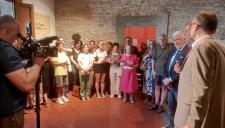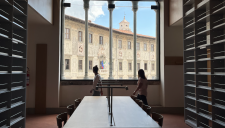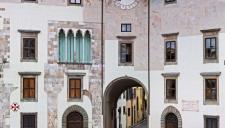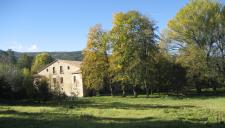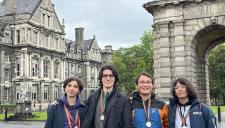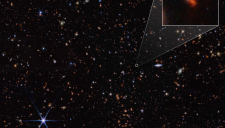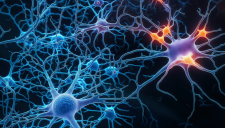In an interdisciplinary study carried out in the Biology Laboratory of the Scuola Normale Superiore (Bio@SNS), Marco Fantini, PhD at SNS, has developed a new method that offers the prospect of determining protein structure without the need to produce and purify proteins to determine their structure by traditional methods.
Pisa, 14 November 2019
The structure of proteins, that is the knowledge of their three-dimensional shape, is the key information that allows understanding their biological function and their role in disease. For scholars, it is essential to know the protein structure in the same way that it is essential to understand the structure of a bicycle to understand its function. Determining protein structure is however a long and complex task.
In an interdisciplinary study carried out in the Biology Laboratory of the Scuola Normale Superiore (Bio@SNS), which combines molecular evolution in vitro with computational techniques, the PhD student in Neurosciences Marco Fantini, jointly supervised by Antonino Cattaneo and Annalisa Pastore, has developed a new method that offers the prospect of determining protein structure without the need to produce and purify proteins to determine their structure by traditional methods.
The article by Fantini et al., just appeared in the Journal of Molecular Biology and Evolution, addresses the fundamental problem of how to obtain information on protein structure, using the message encoded in protein sequences through millions of years of evolution.
The approach of Fantini and colleagues, called CAMELS (Coupling Analysis by Molecular Evolution Library Sequencing), is completely innovative. Proteins are chains of 20 amino acids whose sequence can change, during evolution, due to errors, just like in a text. Instead of relying on natural evolution, the authors imitate nature and induce an in vitro artificial evolution that follows the same rules of variability and selection of natural evolution.
As a paradigm of the method, the team studied the beta-lactamase protein, a bacterial enzyme that confers resistance to antibiotics, created huge libraries of randomly mutated beta-lactamases, introduced mutant genes into bacteria and verified which of these survived antibiotics. This cycle of mutation and selection was repeated many times. Distance maps calculated from sequencing surviving genes provided essential structural information on the original protein.
The study is an important step forward that offers appreciable advantages compared to purely in silico methods. It also provides a new general methodology applicable to any specific protein, young or old: it is a completely new approach that opens new horizons for the determination of protein structure.



